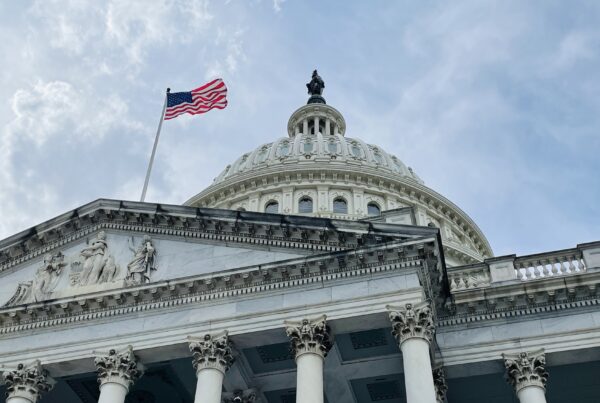Background
Bad debt has become a hot topic and a significant expense for many condominium and homeowner Associations (“Association(s)”). Concern about bad debts has risen over the past few years as the economy has seen a downfall, which at times has impacted some unit owners’ ability to pay their monthly maintenance assessments. Most Associations have financial statements prepared on a monthly or quarterly basis by either their managing agent or, if self-managed, by an internal employee. For this article, we will use the term “management” for the preparer of the internally generated financial statements. It has become increasingly important for the Board to budget and for management to record this non-cash line item.
Bad debt expense often causes the Board to be surprised when the audited financial statements are issued. It is one of the number one reasons why internally generated financial statements prepared by management differ from the audited financial statements (see Article “Why Don’t My Financial Statements Agree?” Vol. 26). Without bad debt expense being recorded by management, the Board may have been expecting an operating surplus. However, after the auditors propose an entry to record the bad debt expense, the Association may be facing an unanticipated operating deficit. This article is to provide Board members and management with procedures that can be adopted to mitigate this potential unpleasant surprise and more accurately reflect the Association’s net surplus (deficit) throughout the year.
What is Bad Debt and Why Should it Be Recorded?
An Association may not always be able to collect the assessments receivable balances owed by its members. If it is anticipated that a receivable most likely will not be collected, an allowance for doubtful accounts may be established and a bad debt expense is recorded. Bad debts typically arise as a result of a unit owner being unable to fulfill their obligation to pay an outstanding receivable balance due to the Association.
We recommend that bad debt expense should be recorded throughout the year to follow the accrual basis of accounting. Meaning, revenue should be recognized as billed and expenses should be recognized as incurred. When unit owners are billed for their monthly maintenance assessments an entry is recorded to debit (increase) accounts receivable and credit (increase) maintenance assessments. When the unit owners remit payment for their monthly maintenance assessments, a new entry is recorded to debit (increase) cash and credit (decrease) accounts receivable. These two entries reflect the ideal situation and would not require an entry for bad debt expense. A problem arises when unit owners do not remit payment for their monthly maintenance assessments and the receivable balance grows and becomes delinquent. If the Board does not anticipate receiving payment from the unit owner, a corresponding entry to debit (increase) bad debt expense and credit (increase) the allowance for doubtful accounts should be recorded to recognize the related bad debt expense when the maintenance assessment income is recorded.
Why and How Should Bad Debt Expense Be Included in the Budget?
The Why: Bad debt expense is a line item that most Associations should be including in their annual budget. For most Associations, maintenance assessments are the primary source of revenue, therefore, nonpaying unit owners can create a significant financial burden to the Association. The cost of unit owners not paying their maintenance assessments can cause a few common problems: ) a short term operating fund deficit, 2) future problems with the Association’s ability to adequately fund the replacement fund, and 3) the Board may be forced to pass a special assessment to raise additional funds. These unfavorable situations can be mitigated by appropriately planning and budgeting for bad debt expense. Budgeting for bad debt expense will increase maintenance assessments on the onset but will reduce the probability that the Association will have to make up lost revenues through a special assessment in the future, or face the other unfavorable situations discussed above. Unfortunately, the nonpaying unit owners are a burden that the balance of timely paying unit owners will be required to “make up.”
The How: Since each Association is different and bad debt expense is initially an estimated cost to the Association, it is often difficult for the Board to accurately budget for bad debt expense. There is no set amount or percentage that can be recommended, however, the following factors should be considered when budgeting for bad debt expense: 1) the total annual operating costs, annual replacement funding, and annual funding of any other funds. These annual costs should be the Board’s starting point in the budget process rather than backing into a desired monthly assessment amount. 2) Review the delinquency listing and determine how many unit owners are delinquent and their annual per unit maintenance assessment. From there, the Board can estimate the annual maintenance assessments they anticipate to be uncollectible. For example, the Board can set up a budget policy that for any unit owners who have an outstanding balance over 90 days delinquent, 100% of their annual maintenance assessments in the budget will be included as the bad debt line item. 3) When budgeting for bad debt expense, the Board should also consider the likelihood and probability that amounts will be collected from unit owners. The Board should consult their attorney to best estimate these amounts. When considering these three factors, it is important to remember that it is better to estimate on the conservative side when it comes to budgeting for bad debt expense due to the uncertainty and potential significance of the expense.
In addition, when budgeting for the bad debt expense, it is important for the Board to consider the other financial impacts that delinquent account receivable balances will have on the Associations’ financial statements. Accounts receivable balances that are not paid timely will often accumulate late fees and fines as well as charge backs for legal fees incurred by the Association. These additional amounts will be added to the unit owners’ balances, in excess of the unit owners’ annual maintenance fees, and will increase the amount required for the allowance for doubtful accounts throughout the year.
When Should Bad Debt Expense be Recorded?
Once the Board has come up with a reasonable estimate of how much bad debt expense is to be included in the budget, it is important that bad debt expense be recorded throughout the year to ensure that the expense is recorded as it is incurred. It is the Board’s decision on how management should be booking bad debt expense. We recommend that the Board ask management to book bad debt expense on a monthly basis based on the budgeted amount previously discussed, as a starting point, and ask that management periodically review the delinquency listing and ensure that the annual budget continues to be an accurate picture for the annual bad debt expense. It is also a good idea to consult the Association’s attorney when booking monthly bad debt expense to make sure that there are no significant changes in the legal collectability of the receivables. For example, if there are delinquent unit owners that were included in the budget that have since paid off their balances or have been written off during the current year then the amount that is recorded should be reduced to reflect this.
It is imperative to note that bad debt expense should be recorded throughout the year. Often times bad debt expense is not recorded throughout the year and the expense reflected is $0 until the audit is completed. When the audit is completed, the expense recorded has the potential to completely change the financial results that the Board is anticipating. It is very common for the bad debt expense to cause an operating deficit, one that is unanticipated by the Board as the monthly financial statement packages that have been internally generated have reflected an operating surplus due to bad debt expense being omitted.
When is a Receivable No Longer a Receivable?
There are two different situations that relate to delinquent receivables:
1) Unlikely to collect accounts receivable is the most common situation and is ultimately a major unknown for Associations. In this, situation the Board should come up with a policy to appropriately allow for doubtful accounts throughout the year. For example, the Board can come up with a policy that allows for 100% of all receivables in legal collections with the attorney. However if the Board deems appropriate, they should determine the amount that is unlikely to be collected and an entry should be made to increase the allowance for doubtful accounts as well as the bad debt expense. It is important to note that in this situation, the actual accounts receivable balance remains unaffected until it is better known whether the accounts receivable balance (or a portion thereof) will be collected or will later deemed to be 100% uncollectible.
2) Uncollectible accounts receivable, which is when it is not legally possible to recover funds. The Association’s attorney should be consulted to provide guidance that the account receivable is 100% uncollectible and should, therefore, be written off. When an account is written off, management should record an entry to credit (decrease) accounts receivable and either debit (increase) bad debt expense or (decrease) the allowance for doubtful accounts, if the unit owner previously had an allowance set up. Any decision to write off an account balance should be documented in the Board minutes. In either situation, anytime that the Board is looking to determine the collectability of accounts receivable it is highly recommend that the Association’s attorney be consulted to best determine how to handle each individual unit owners’ balance.
Understanding the Financial Statements
When the Board receives the financial statements it is important to understand how the balance sheet line item shown “Accounts Receivable, net of allowance for doubtful accounts” should be interpreted. The allowance for doubtful accounts reduces the amount of accounts receivable on the balance sheet, as it is shown as net. The net amount of accounts receivable shows the amount the Association estimates to be collectible. Without the allowance for doubtful accounts if necessary, the Association’s balance sheet would be overstating assets as it would be deeming 100% of the receivable collectible. For example, if the Association has accounts receivable of $100,000 and an allowance for doubtful accounts of $80,000 the net accounts receivable shown on the balance sheet would be $20,000. This means that that $20,000 is estimated to be collectible and $80,000 is estimated to be unlikely to collect.
In addition, the allowance for doubtful accounts is a cumulative total that reflects current year and prior years’ activity. The current year impact is shown in the financial statements through the line items on the back pages and cash flow statement titled “bad debt expense”, “bad debt recovery”, or “reduction in allowance for doubtful accounts”. These line items reflect the current year increase (decrease) in the allowance for doubtful accounts.
Conclusion
The Board and management should work together throughout the year to ensure that internally generated financial statements accurately reflect the Associations’ current financial position. By budgeting and recording bad debt expense – the most significant non-cash expense – throughout the year, the likelihood of an unpleasant Board surprise when the audited financial statements are issued is mitigated. It is important to remember that bad debt expense is a moving target and should be evaluated on a recurring basis. Any decisions regarding the collectability of accounts receivable should be discussed with the Associations‘ attorney. The Associations’ CPA can assist the Board and management in determining policies and procedures to appropriately allow for doubtful accounts throughout the year.





